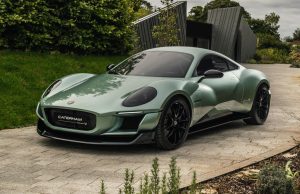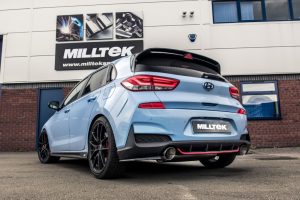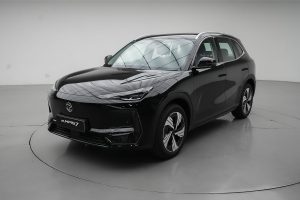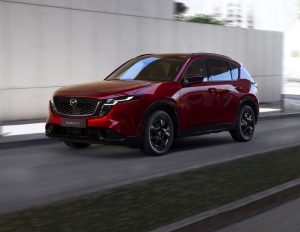THE Mitsubishi Xpander clearly endeared itself to Malaysian passenger vehicle owners more than its rivals to carry the boast of being the top non-national multi-purpose vehicle (MPV) over four years.
The numbers do not lie and Mitsubishi Motor Malaysia (MMM) has moved more than 40,000 Xpanders to happy homes since its launch in 2020.
That means a monthly average of more than 830 Xpanders and this is an incredible achievement given the strong rivals it faces.

Following the launch of the Xpander facelift model, the media drive that followed gave us the opportunity to discover its winning charm firsthand.
The top-of-the-range Xpander Plus was used for the media drive from Kuala Lumput to Melaka, and this is the first time MMM has made available more than one variant for this MPV range.
There appears to be a grey area these days in vehicle description as our understanding of an MPV refers to a one-box body styling, along that of a van.

When the vehicle is of a two-box body design, i.e. a box for the engine and a box for the rest of the body, it is generally classified as a sports utility vehicle (SUV).
Description aside, the Xpander is clearly a vehicle that panders to the family types with its seven-seater interior accommodation and flexible interior space for transporting sizeable items like furniture bought from Ikea.
The latest Xpander does grab your attention with its new touches; while the Dynamic Shield Design for the front is retained, it dons a fresh look with the T-shaped light emitting diode (LED) headlamps.

This is well complemented at the rear with the T-illuminated LED taillamps, which is again refreshing the previous design outline.
It now runs on bigger 17-inch alloy wheels (previously 16-inch size) with dual tone format to bring out the sporty orientation.
The Xpander Plus fetches RM10,000 more than the standard variant at RM109,980 (on the road without insurance), some of the extras that come with it are the stylish tailgate spoiler and scuff plates.

Another discerning note for the Xpander Plus is that it comes with silver accent for the front and rear bumpers, against black for the standard version.
Among the nine Xpander Plus unit provided for the drive, a few were in the new colour option of Graphite Gray.
Getting comfortable in the Xpander Plus is aided by the new leatherette seats, the premium soft touches and digital climate control.

The rear air circulator, which is an overhead blower unit, is retained for the cool comfort of everyone on board.
The Xpander might lean towards the family types but the new sporty steering wheel with audio and cruise control would surely be welcomed; by the way, it is said to be adapted from the Mitsubishi Lancer Evo 10!
The extras for the Xpander Plus here are the wireless charger on the central console and the nine-inch multimedia display on the central dashboard area, complete with capacitive touchscreen.

Common updates are enjoyed in the leatherette centre console armrest and a foldable armrest with cupholder for the second-row seats.
For the driver, apart from the tilt and telescopic steering column, seat adjustments continue to be manually adjusted.
The second-row seats with 60:40 split backrests continue to come with incline adjustment and slide function to provide ample legroom for those in the third row.

Getting into the third row is made convenient with the easy tumble design of the second-row seats but the accommodation in this area is best for children.
The luggage area looks somewhat limited for a family of seven on a holiday trip although it should be fine for a family of six.
This is because you could fold down one of the 50:50 split third-row backrests to free up space for the extended luggage.

There is no update in the engine being the same 1.5-litre Mivec unit that delivers 105PS (77kW) and 141Nm of torque that drive the front wheels via a four-speed automatic transmission.
As Mitsubishi believes that the four-speed automatic transmission still delivers good performance and fuel returns for its intended purpose, there was no need to upgrade to a five-or six-speed unit.
We couldn’t argue with that as we felt the engine power characteristics complemented the transmission in urban and highway driving.

As the route took in the winding roads of Ulu Langat, we could explore the limits of the Xpander dynamic quality through the corners.
There was good directional feedback through the steering wheel and the body lean was nicely checked to encourage us to push the Xpander a fair bit.
The tyres fitted as standard on the Xpander Plus were Bridgestones Ecopia EP150 of the size 205/55R17.

On the uphill sections, the engine had to work harder in second and third gears, leading to engine noise intruding the passenger cabin as expected.
For urban and highway drives, the engine ran quiet enough as it delivered ample torque to move along nicely.
What we discovered as a second-row seat passenger was the higher-than-expected road roar that was transmitted via the C-pillar or the third roof pillar.

In a way, it helped to drown out the engine roar during low gear drives but it also deprived us of enjoying 40 winks on highways.
Ride was decent all round when going over the good mix of secondary and urban roads as shock impacts were largely absorbed by the suspension components.
The rear dampers of the Xpander facelift are now larger and this helped to maintain consistent damping quality on long drives.

On the highway, the Xpander felt stable enough even at high speeds but the bigger body was more susceptible to cross winds, which we experienced at one point.
The Xpander meandered as a result and we had to slow down and not be blown off course, but it was generally manageable.
A positive note was the good body aerodynamics that reduced air turbulence and allowed normal conversation, even at a quick trot.

Driven prudently, we found the Xpander fuel sipping on the highways with the average fuel consumption readout indicating 7.0L/100km (above 14km/l).
That was achieved over about 30km and we believed it could go to a low 6L/100km over a longer distance.
This should go down well with the family types who buy the Xpander as it is a nice car to drive all round, with a flexible interior to accommodate all and sundry.

And driving the Xpander facelift is made even more convenient with the new electronic parking brake and brake auto hold feature along with the all-round view monitor to make parking in tight places easier.
It’s a good bet that MMM would see an expected increase in demand for the latest and fresher looking Xpander with all the trendy goodies in tow.
















